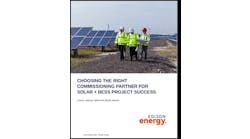By Elisa Wood
November 20, 2008
President-elect Barack Obama wants to create five million new green jobs over the next decade. This is a big goal, but in line with what clean energy industry advocates see as possible.
An upcoming international report provides some solid perspective on why green initiatives make for good job building opportunities.
Scheduled for release next summer, “Greening Buildings and Communities: Costs and Benefits,” finds that green buildings create roughly $1/square foot of value in increased employment. A typical green office creates roughly one-third of a permanent job per year. This is done by shifting spending from fossil fuel-based energy to more labor intensive domestic jobs in energy efficiency, renewable construction and new green industries.
A preview of the study, released this week by Good Energies www.goodenergies.com, also finds that green buildings are not as pricey as often believed. They add, on average, about two percent to the cost of a building. Moreover, green buildings reduce energy use by an average 33%. The extra cost of building green usually pays back within five years.
Based on an analysis of 150 green buildings in the United States and 10 other countries, the study is billed as the largest international review of its kind to date.
What good is it to bet on jobs from new construction in this economy? It turns out that green buildings are not falling victim to today’s real estate downturn. Buildings in green neighborhoods are holding value better than conventional homes. On average, sales prices tend to be $20/square foot higher.
“The deep downturn in real estate has not reduced the rapid growth in demand for and construction of green buildings,” said Greg Kats, the study’s lead author and a Managing Director of Good Energies. “This suggests a flight to quality as buyers express a market preference for buildings that are more energy efficient, more comfortable and healthier.”
The report’s findings underscore a growing sentiment that the green energy and efficiency industries are key to economic recovery. What we’ve lost – jobs and real estate values – these industries offer to give back.
Visit Elisa Wood at www.realenergywriters.com and pick up her free Energy Efficiency Markets podcast and newsletter.





